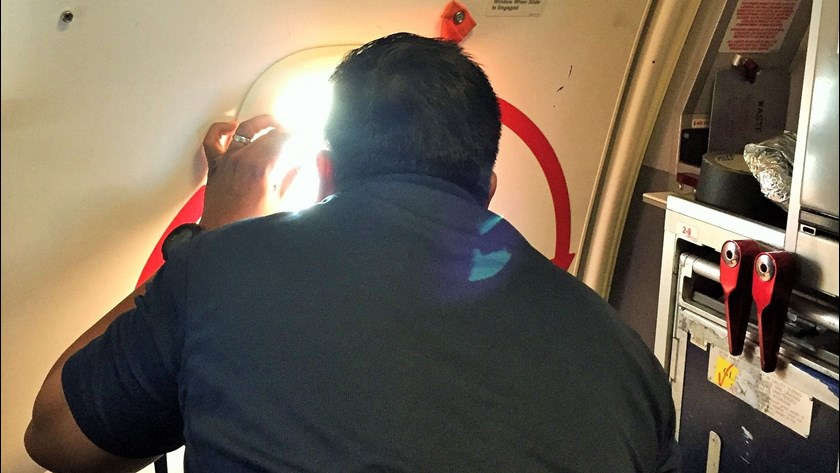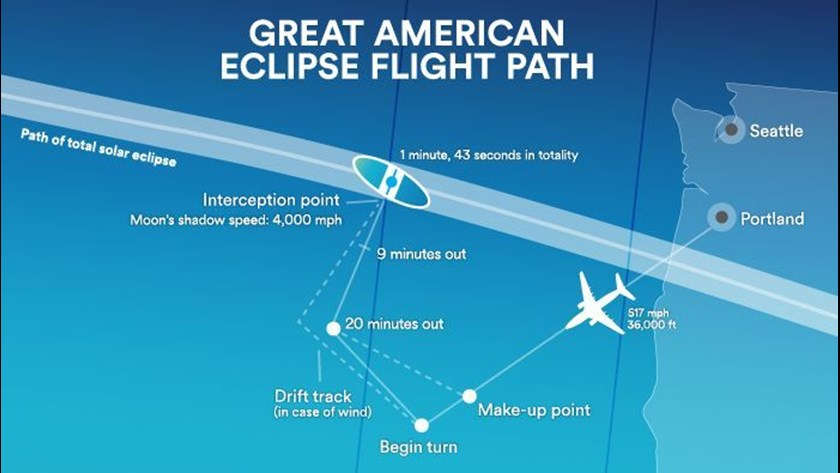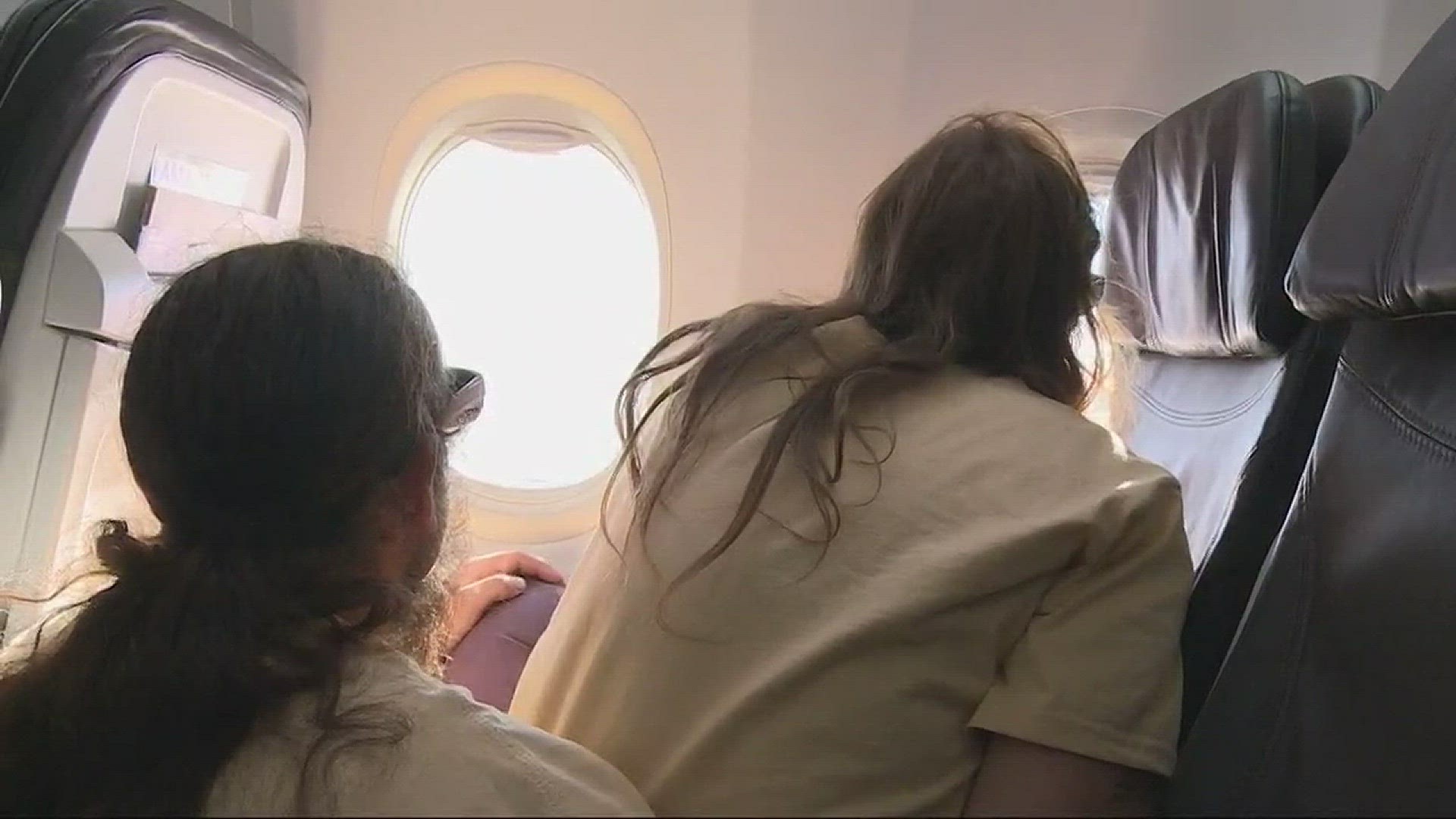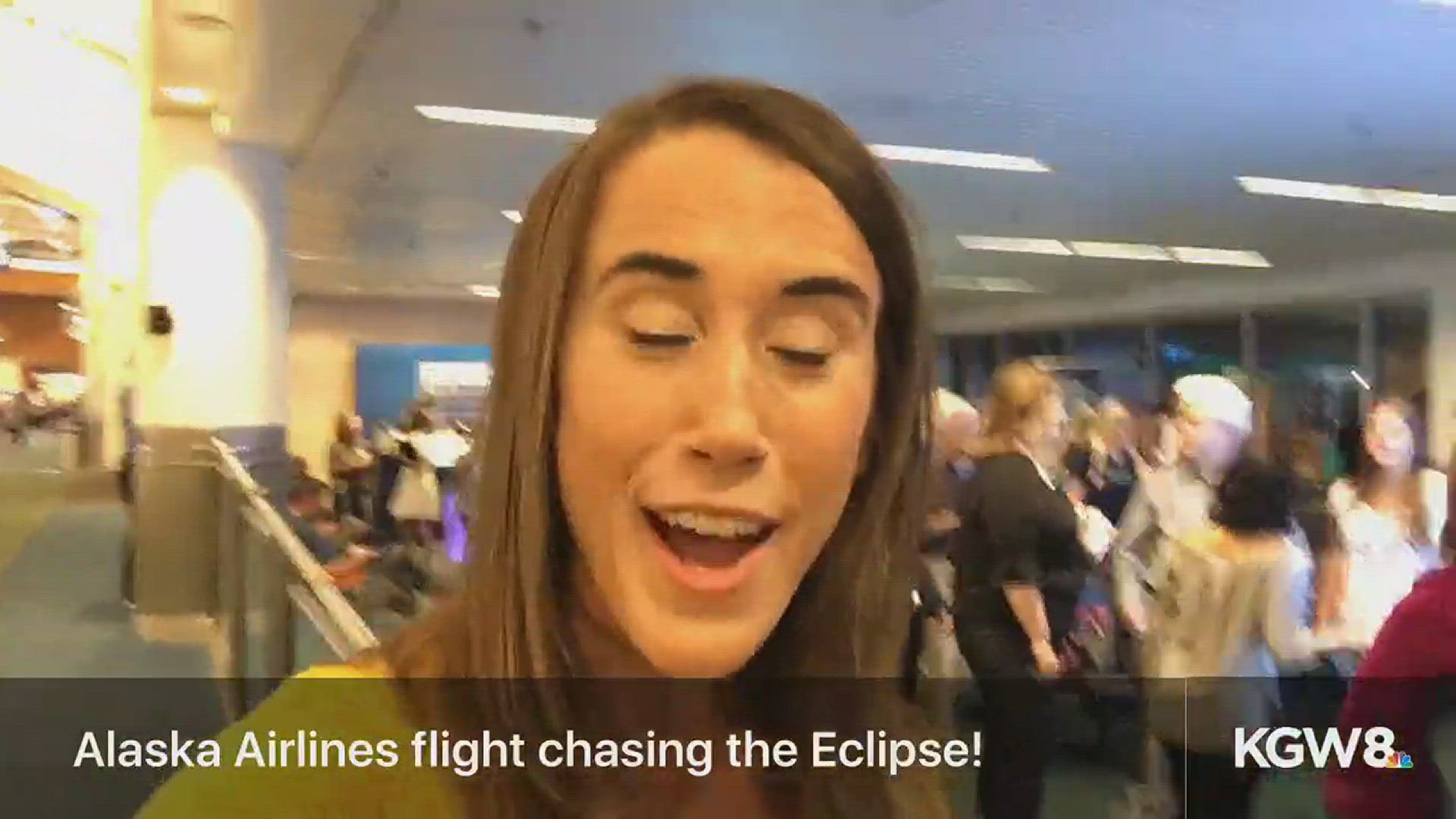PORTLAND, Ore. -- While millions of people got ready to watch today’s total solar eclipse from the ground, Alaska Airlines hosted an eclipse-viewing party in the air.
Alaska’s charter Flight #9671 left Oregon’s Portland International Airport before 7:30 a.m. PT and headed west for two hours out over the Pacific Ocean. On board, astronomy enthusiasts, eclipse-chasers, a NASA astronaut, social media contest winners and other guests flying in the freshly-washed Boeing 737-900 were treated to a unique and early view of the total eclipse from 40,000 feet.
Before entering the path of totality, Alaska Airlines pilots and invited on-board experts, including Evgenya Shkolnik, an astrophysics professor at the School of Earth and Space Exploration at Arizona State University, meteorologist Joe Rao, and NASA Astronaut Michael Barratt explained to passengers the technical details involved with both the eclipse and the flight. They offered tips on what to look for as the plane entered the path of totality and gave passengers a count-down into and out of the path of totality.
Yelps of “There it is!”, “Wow!", “Oh my goodness!”, and “Thank-goodness this worked!” filled the cabin as the flight hit the coordinates that astronomers and pilots had so carefully plotted out beforehand. And, during the 1 minute 43 seconds of the total eclipse, many passengers seated on both the left and right side of the plane swapped seats multiple so everyone had a chance to see the astronomical occurrence billed as a “once in a lifetime event.”

As the plane headed back to Portland and left the path of totality, flight attendants handed out glasses of champagne for a toast.
Witnessing the total eclipse from the plane was both “haunting and humbling” said Tanya Harrison, an astronomer-turned-planetary scientist at Arizona State University. “It shows you how much we depend on the sun and how easily something like a volcanic eruption or a nuclear winter could get in the way.”
Overall, the experience was “breathtaking,” exclaimed Barbara Mann, of Snohomish, Wash. With her husband Eric, Mann had placed the winning $21,000 bid on two seats on the charter flight at a benefit auction on Saturday night. “I especially enjoyed the colors of the corona reflecting off the ice crystals in the clouds below immediately after the total eclipse. We definitely got our money’s worth. And then some.”
Over the past few months, astronomers worked closely with Alaska Airlines pilots to chart the best flight path to catch the eclipse and found that, for a variety of reason, heading out over the ocean would provide the ideal views.
“The first reason relates to the high altitude of the sun,” the airline explained in a fact sheet. “In order to allow observers to see the Sun both from the window and adjacent middle seat, we need to fly from Portland International Airport to a pre-selected position approximately 815 nautical miles to the west-northwest over the open waters of the Pacific Ocean.”
Another reason for traveling away from the mainland is to avoid potential “aerial gridlock” or congestion in the skies over the Oregon eclipse zone as the time of totality nears and private jets take to the sky.
A third reason is that passengers will be able to see things from 38,000 feet that aren’t visible from the ground, “like the moon’s shadow racing across the ocean towards the sun as we near totality,” said meteorologist Rao, an instructor and lecturer at American Museum of Natural History’s Hayden Planetarium.

Alaska Airlines' 737 Fleet Capt. Brian Holm and Capt. Hal Anderson worked with astronomer Glenn Schneider and others for months to ensure passengers on this flight get one of the first views of the total solar eclipse – at 10 a.m. local time (1 p.m. ET).
The airline’s measurements, combined with calculations performed by software developed by Schneider, were used to pinpoint where and when the airplane will intercept with the great American eclipse.
“As the eclipse travels across the country it will be pretty high in the sky,” Holm prior to the flight. “And by traveling to the west we’ll be intercepting it earlier in the morning to get a better view. We’re shooting for an optimized viewing experience with the sun directly off the wing tip so passengers will have a perfect view of totality for what we estimate will be 1 minute 43 seconds.”
Holm volunteered that there was no need to worry the plane will tip when everyone rushes over to view the eclipse on the right side of the plane.
While exacting plans for the flight have been in place for some time, the airline has left room for a bit of flexibility.
“We have a long list of contingency tables and plans we can use if we need to make any changes due to weather, traffic, or time issues,” said Holm. “Because the last thing we want to do is disappoint anyone on this important day.”
For Monday's eclipse flight, Alaska Airlines has secured eclipse glasses for all passengers and pilots and put together a special in-flight entertainment program that includes space-themed TV shows and movies including: “Hubble’s Cosmic Journey”, “Avatar”, “Hidden Figures,” “The Martian” and “Star Wars: A New Hope.”
This isn’t the first time an Alaska Airlines plane has chased an eclipse. At the request of eclipse-chasers, Alaska Airlines adjusted the route of a flight in March 2016 to optimize viewing of a total solar eclipse over the Pacific Ocean.


